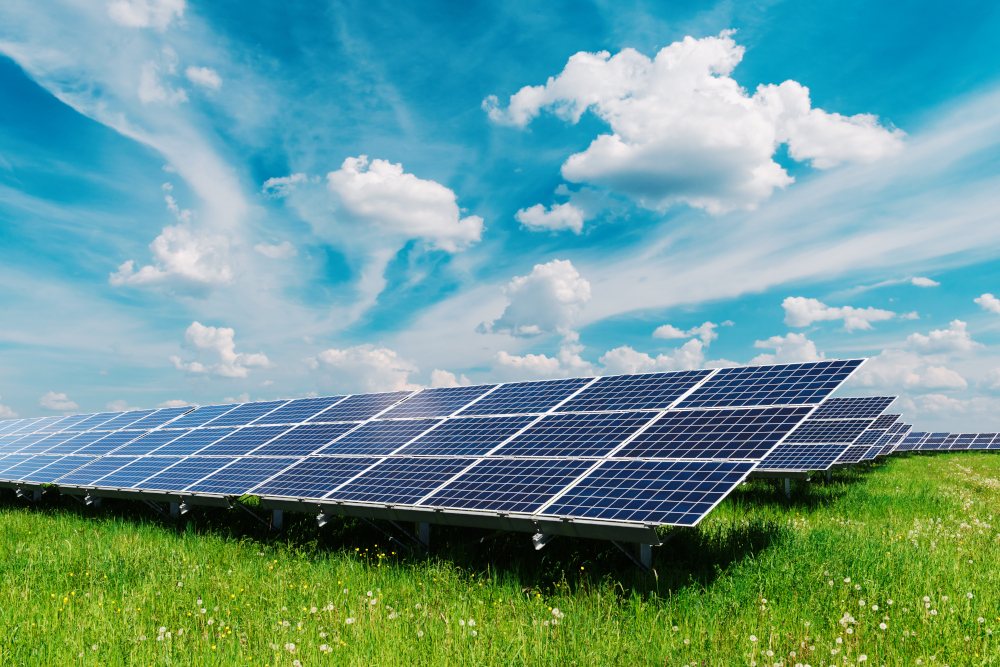IFE were among the first research communities in Norway to start working with solar energy, or photovoltaics (PV). Today, we are the largest competence environment in Norway, and work in close collaboration with both Norwegian and international partners to support the development and implementation of a variety of solutions for solar energy generation.
To aid the acceleration of a sustainable energy system, a massive upheaval of our current energy system is needed as well as the development of new technology in several areas. Norwegian energy companies have increasingly involved themselves in solar energy, very often in cooperation with IFE in research projects. IFE participates today in multiple projects on solar energy, financed both by involved companies, Innovation Norway, Research Council of Norway, and Horizon Europe.

The solar research at IFE is divided in two departments, the Department of Solar Energy Materials and Technology and the Department of Solar Power Systems. More than 35 researchers and engineers works full-time with solar energy at IFE, and their research fields include both the sustainable production of silicon for solar cells, development of new types of solar cells and modules, large-scale solar power plants and data analysis, and integrated solar energy such as floating PV, PV in combination with other land area use, and PV integrated in buildings and infrastructure.
IFE offers several services in combination with our PV module outdoor test facility, the PV module characterization and testing laboratory and the solar cell laboratory.
Solar energy research topics
Solar Cell Technology
Solar cell technology is a main activity at IFE, and a focus area of the Department of Solar Energy Materials and Technology. The research within solar cell technology includes both sustainable production of silicon and the development of innovative and efficient solutions for solar cells and PV modules. The department runs the Solar Cell Laboratory at IFE, which includes a full production line of solar cells. This production line contains all processes required to produce complete solar cells and PV modules from untreated silicon wafers, which provides a unique opportunity to improve the different production stages and develop new types of PV modules.
The work with solar cell technology also includes the optimization of solar cells with respect to optical reflection and colours, as well as other energy materials and smart windows. Several types of innovative PV modules and solar cells are constantly being developed for multiple purposes, often in cooperation with Norwegian companies.
Solar Cell Technology
Large-scale PV
Large-scale solar power plants, often called utility-scale, are continuously getting cheaper and the amount of such facilities is rapidly increasing worldwide. The potential for a Norwegian-based international industry is large, and there are currently planned several large-scale solar power plants to be developed in Norway.
However, the development is challenging, as large-scale solar power plants may contain millions of components to be installed, operated, and maintained in a cost-efficient and environmentally friendly manner for at least 30 years. In addition, the large amount of data needs to be analysed, both to be able to predict the energy production in the utility market and to be able to operate and maintain the power plant.
To sufficiently manage the data flow from such large facilities, modern digital tools, advanced data analysis and machine learning are crucial. At IFE, the Department of Solar Power Systems has a group of specialists working with leading Norwegian companies within this field. The group contributes to securing suitable designs and modelling of the power plants, investigating the energy yield, degradation, fault detection and reliability, as well as hybrid solar power plants which combined solar power generation with other types of renewable energy generation.
Solar Power plants
Floating PV (FPV)
Floating PV is an innovative type of solar energy that has seen a great growth for the past few years. The technology consists of solar cell panels installed on a floating construction, situated on a body of water. An important advantage of floating PV is the option to make use of areas which are not conflicting with other usages, such as water reservoirs, lakes, or offshore. This makes it attractive for urban areas, in areas where the necessary space for other solar PV modules are not available or very expensive, or in areas with a lot of unused water surface not currently being utilized.
At IFE, the Department of Solar Power Systems has a subgroup dedicated to research on floating PV. This group works with development of specific individual technological solution, assessment of performance and reliability of floating PV through laboratory tests and in the field, and increasing the energy yield, optimizing maintenance, and mechanical and thermal influences on the floating solar cells during use. IFE collaborates with several Norwegian and international companies developing solutions for floating PV.
PV in buildings
Due to increasing demands on land use, the combination of solar energy with already occupied areas is becoming more attractive. This attraction increases with the decreasing costs of solar cells, and the combination of solar energy with other structures provides an added value to the structure. PV panels can be installed either as separate structures on already existing constructions such as roofs, so-called applied PV, or as integrated components in the construction, such as roofing material or façade components.
Integrated solar energy in buildings and infrastructure is a field of research with great progress and advancement in Europe and Norway. Building-integrated PV, or BIPV, replaces a construction material with a multifunctional PV panel which covers the functionality of the building envelope as well as it produces energy. This replacement saves the cost of the original construction material.
At IFE, research on building-integrated solar energy is performed at both solar departments, and in close cooperation with the subgroup working on integrated solar power in Nordic markets. The research at IFE consists of among others the development of new types of solar cells that are well suited for integration in buildings of different typologies and solar conditions, PV panels with different colours, testing of BIPV panels both as a building component and a solar cell, and yield of integrated PV in Norway. The work is performed in cooperation with several Norwegian and international companies and organisations.
Integrated solar power in Nordic markets
In recent years the price of solar cells has fallen so dramatically that more and more people are now looking to invest in solar panels. These can be installed either as free-standing structures on roofs or as integrated components of construction modules such as roof slates or facade panels.
Integrated solar power are solar panels that are combined and put together with constructions that already have an additional function, like a building, road, sports arena etc. Integrated solar thus represents an additional value of the construction and will, in many cases, replace a construction component that can be alleviated. Typical construction components that can be replaced by solar components are roofing, wall claddings, railings and windshields, sun and rain screens etc.
For a brief overview, please check out the video presentation of IFE’s solar energy research:


